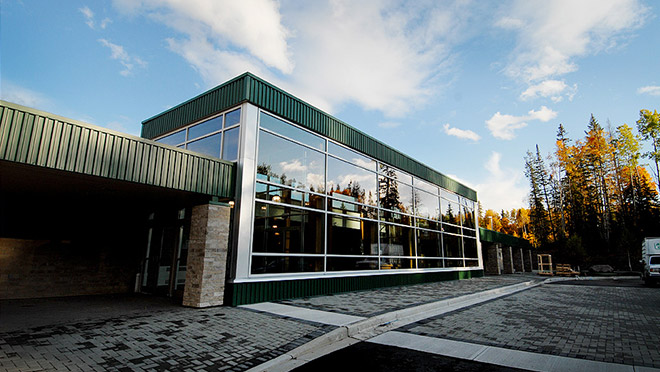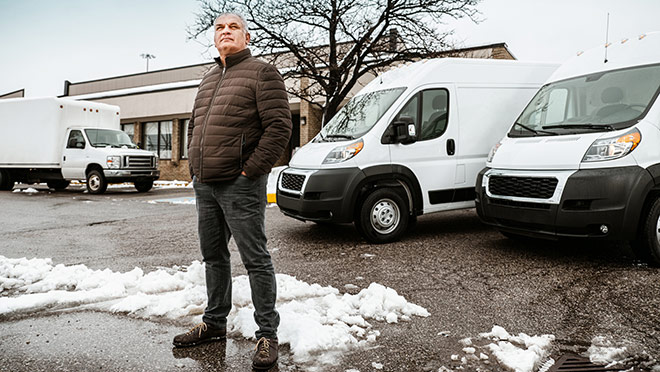Lessons learned from a prolonged pandemic

BC Hydro key account managers offer insights, advice
A whole lot has changed since COVID-19 forced us indoors, tossed supply chains into disarray, and made it necessary to conduct business differently. Then along came a war in Europe and more signs that climate change is accelerating even faster than many thought possible.
Where are we today, and what have we learned? We asked three BC Hydro key account managers to offer their insights into what's changed and what Alliance members should know to keep projects on track.
1. Communication matters more now than ever
A customer gets the good news that a project agreement has been issued by BC Hydro. But delays occur when one of two things happens.
In the first scenario, the customer executes the agreement, then forgets to call their contractor to start the project and place the order. In the second, the agreement sits with the customer, waiting to be signed.
In both cases, the project falls behind, with key elements sliding a month or more behind schedule, at a time when shipping of products and coordinating labour can take much longer than normal.
"Some contractors and customers are better at communicating than others," says Victor Chow, key account manager in the hospitality and retail sector. "Sometimes there's a big gap between when an agreement is signed and an order is made. A contractor can be sitting on an order, waiting for the customer to call. But it's a good idea to follow up with the customer to see if that agreement is signed so that an order gets in right away.
"A lot of customers rely too heavily on their key account manager thinking that we'll notify their contractor."
2. Ventilation is a bigger priority, and costs can rise
Once health authorities figured out that COVID-19 was transmitted primarily through the air, rather than by touch, we didn't just start wearing masks. We also saw operators of schools and offices, in particular, pay more attention to how spaces were ventilated, and how many hours per day to keep those HVAC systems running.
"Probably the biggest challenge that school districts have had to overcome is a new requirement to run their mechanical systems for an additional four hours per day," says Aron Garrecht, who specializes in the K-to-12 school sector. "They now have to run them for two hours before the school opens and two hours after the school closed to facilitate a higher minimum number of air changes in the building. And that has had a major impact on their utility bills."
Garrecht says that there's also a need for increased education amongst faculty and staff on the changes in how schools are now being managed from an HVAC perspective, and what they can do to help ensure a building is running efficiently. Some teachers concerned with ventilation during the pandemic, for example, thought it was a good idea to open windows year-round to allow for fresh air.
3. Price volatility is complicating projects
Supply issues and other factors have driven up the costs of many products, and that's making many projects more costly.
"The price of projects has gone up dramatically, especially for those who haven't already locked in the contract for a project," says Ron Mastromonaco, key account manager for advanced education customers. "Once contractors get quotes in, they have to see if they've built in enough contingency to deal with it. And they're also dealing with supply chain issues."
4. Expect a more cautious approach from some customers
There was a time not so long ago when projects in the advanced education sector were rolling in at a breakneck pace, but the pandemic is slowing things down.
"I've seen some projects put on the back burner recently," says Mastromonaco. "That might be based on some new costing that's come in, or a shift in how the customer wants to approach a project. Don't be surprised when customers take more of a wait-and-see approach to projects."
5. Electrification is an easier sell in some sectors
In the battle against climate change, the push for fuel-switching via the likes of heat pumps, electric boilers, and electric vehicle fleets, will continue. But it's an easier sell to some customers than others.
Some early adopters may seek to push their decarbonization measures ahead of mandated government targets. But many are primarily driven by long-term cost savings or mandated CO2 reductions, and targets in education and government tend to be much higher in some sectors than others.
"Some sectors are uniquely positioned because of really aggressive goals for tackling GHG emissions," says Mastromonaco. "A lot of others are going 'well, I can't really do this and I'm not really under a mandate to do it, so I'll wait'."
6. Vehicle budgets will define fleet electrification growth
New EV fleet rebates, including funding for fleet electrification pilot projects, have attracted a lot of interest from B.C. businesses. But that growing appetite for electrifying fleets is running up against two realities: tight budgets for vehicle purchases, and limited availability of the right vehicles for the job.
"For school districts, fleet electrification is gathering momentum pretty quickly," says Garrecht. "But they're having to balance vehicle electrification with their existing fleet utilization. They may not be able to buy a new electric van or bus until existing vehicles have reached the end of their duty cycle."
On the charging side, the Burnaby School District already has Level 2 chargers operating at all their high schools except the under-construction Burnaby North, which is slated to offer six Level 2 EV charging stations. Unfortunately, several school districts, including Burnaby, maintain numerous aging schools connected with single-phase services that don't permit or provide the required capacity to be upgraded with Level 2 EV chargers.
Learn more about fleet electrification.
7. The pandemic made it easier to get some projects done
Increased downtime for B.C. businesses, plus prolonged periods of fewer people in facility spaces, opened the door for unprecedented access and opportunity for some projects during the pandemic. After an initial pause in project work to develop COVID-19 safety protocols, several sectors completed BC Hydro projects at near-record rates.
Summer can also be a great time for projects.
"Summer may be downtime for students and teachers, but it's one of the busiest times of the year for maintenance and energy management staff," says Garrecht. "School districts tend to do the bulk of their retrofit projects during the summer as it avoids impacting students with school shutdowns. Shutdowns are often required to safely implement lighting or mechanical retrofits and EV installation projects.
"If these works cannot be performed during the summer, it tends to get squeezed in over Christmas holidays or during March break, but these alternative shutdown periods can be challenging in terms of resources."
Have a potential project?
Email us for help in determining your customer's program eligibility, clarification of the program offers, and various requirements.
